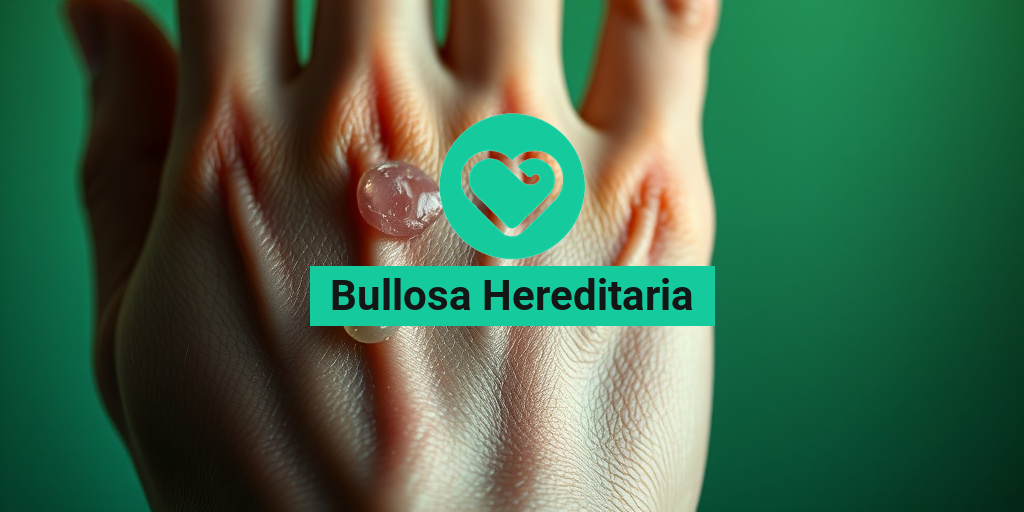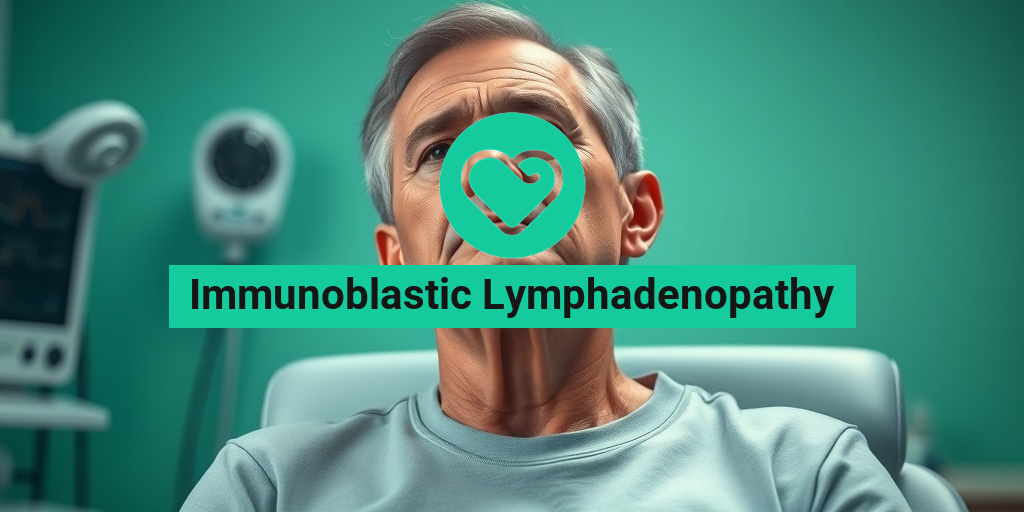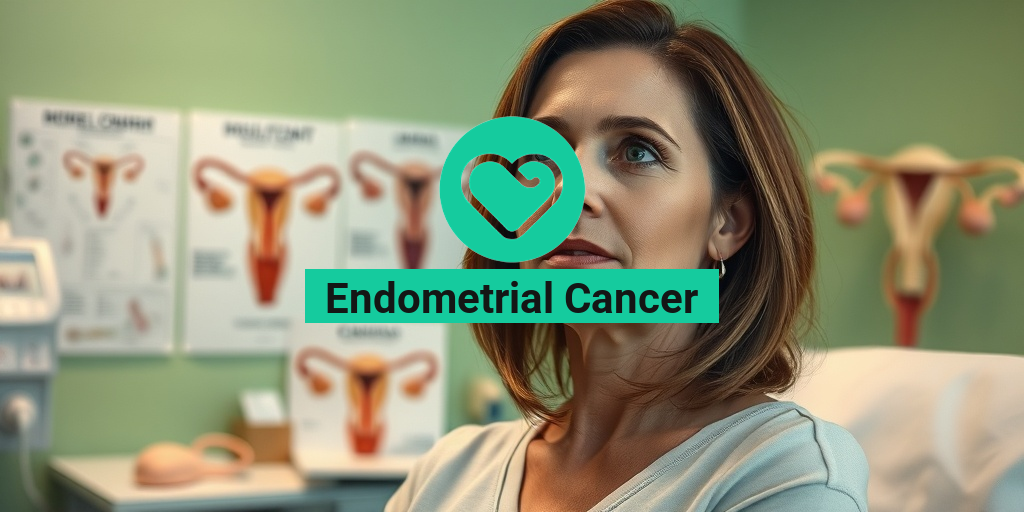What Is Bullosa Hereditaria?
Bullosa Hereditaria, commonly known as Epidermolysis Bullosa (EB), is a rare genetic skin disorder characterized by extreme fragility of the skin and mucous membranes. This condition leads to the formation of blisters and sores in response to minor injuries, friction, or even spontaneous occurrences. The term “bullosa” refers to the blistering aspect of the disease, while “hereditaria” indicates its genetic nature, meaning it is passed down through families.
Types of Bullosa Hereditaria
There are several types of Bullosa Hereditaria, each classified based on the layer of skin affected and the specific genetic mutations involved. The main types include:
- Epidermolysis Bullosa Simplex (EBS): This is the most common form, where blisters form within the outer layer of the skin (epidermis). Symptoms often appear at birth or in early childhood.
- Epidermolysis Bullosa Dystrophica (EBD): This type affects the deeper layers of the skin and can lead to more severe complications, including scarring and deformities.
- Epidermolysis Bullosa Junctional (EBJ): A rarer form that affects the junction between the epidermis and dermis, often resulting in more serious health issues.
Understanding the specific type of Bullosa Hereditaria is crucial for effective management and treatment. Genetic testing can help identify the exact mutation responsible for the condition, guiding healthcare providers in tailoring treatment plans.
Causes of Bullosa Hereditaria
The primary cause of Bullosa Hereditaria is mutations in genes responsible for producing proteins that help anchor the layers of skin together. These mutations can be inherited in an autosomal dominant or recessive manner, depending on the type of EB. In simpler terms, this means that a child can inherit the condition if one or both parents carry the mutated gene.
Bullosa Hereditaria Symptoms
The symptoms of Bullosa Hereditaria can vary significantly depending on the type and severity of the condition. However, some common symptoms include:
- Blister Formation: The hallmark of Bullosa Hereditaria is the development of blisters, which can occur on the skin and mucous membranes. These blisters may be painful and can lead to infections if not properly managed.
- Skin Fragility: Individuals with EB often experience skin that is easily damaged, leading to frequent injuries and wounds.
- Scarring: Over time, repeated blistering and healing can result in scarring, which may affect mobility and appearance.
- Itching and Discomfort: Many patients report itching and discomfort in areas where blisters have formed, which can significantly impact their quality of life.
- Dental Issues: In some cases, EB can affect the mouth, leading to dental problems such as difficulty eating and tooth decay.
Managing Symptoms
While there is currently no cure for Bullosa Hereditaria, effective management strategies can help alleviate symptoms and improve the quality of life for those affected. Here are some approaches:
- Wound Care: Proper wound care is essential to prevent infections and promote healing. This includes cleaning the affected areas and using appropriate dressings.
- Pain Management: Over-the-counter pain relievers or prescribed medications can help manage discomfort associated with blisters and skin injuries.
- Moisturizers and Barrier Creams: These products can help protect the skin and reduce friction, minimizing the risk of blister formation.
- Genetic Counseling: For families affected by Bullosa Hereditaria, genetic counseling can provide valuable information about inheritance patterns and family planning.
For more detailed information and resources on managing Bullosa Hereditaria, consider visiting Yesil Health AI, where you can find evidence-based health answers tailored to your needs.
In conclusion, understanding Bullosa Hereditaria is crucial for those affected and their families. By recognizing the symptoms and implementing effective management strategies, individuals can lead fulfilling lives despite the challenges posed by this condition. 🌟

Bullosa Hereditaria Causes
Bullosa Hereditaria, commonly known as Epidermolysis Bullosa (EB), is a group of rare genetic disorders that result in fragile skin and blister formation. Understanding the causes of this condition is crucial for those affected and their families. Let’s delve into the primary causes of Bullosa Hereditaria.
Genetic Mutations
The primary cause of Bullosa Hereditaria is genetic mutations that affect the proteins responsible for skin integrity. These mutations can occur in various genes, leading to different types of EB. The most common types include:
- Epidermolysis Bullosa Simplex (EBS): Caused by mutations in keratin genes, which are essential for skin cell structure.
- Epidermolysis Bullosa Dystrophica (EBD): Linked to mutations in the collagen genes, affecting the dermal-epidermal junction.
- Epidermolysis Bullosa Junctional (EBJ): Resulting from mutations in genes that encode proteins critical for anchoring the epidermis to the dermis.
These genetic mutations are inherited in an autosomal dominant or autosomal recessive manner, meaning that a child can inherit the condition from one or both parents, depending on the type of mutation.
Environmental Factors
While Bullosa Hereditaria is primarily genetic, certain environmental factors can exacerbate the condition. For instance:
- Friction and Trauma: Activities that cause friction on the skin, such as vigorous sports or rough clothing, can lead to blister formation.
- Temperature Changes: Extreme heat or cold can stress the skin, making it more susceptible to blisters.
- Infections: Skin infections can complicate the condition, leading to more severe symptoms.
Understanding these causes can help in managing the condition effectively and minimizing the risk of blister formation.
Bullosa Hereditaria Risk Factors
Identifying the risk factors associated with Bullosa Hereditaria is essential for early diagnosis and management. While the condition is primarily genetic, several factors can influence its severity and impact on individuals.
Family History
The most significant risk factor for developing Bullosa Hereditaria is a family history of the condition. If one or both parents carry the genetic mutations associated with EB, their children are at a higher risk of inheriting the disorder. Genetic counseling can be beneficial for families with a history of EB to understand their risks and options.
Type of Epidermolysis Bullosa
The specific type of Bullosa Hereditaria also plays a role in determining risk factors. For example:
- Epidermolysis Bullosa Simplex: Generally considered the mildest form, but individuals may still experience significant blistering.
- Epidermolysis Bullosa Dystrophica: Often more severe, leading to complications such as scarring and fusion of fingers and toes.
- Epidermolysis Bullosa Junctional: Can be life-threatening, particularly in its severe forms.
Understanding the type of EB can help in anticipating potential complications and tailoring treatment plans accordingly.
Age and Gender
While Bullosa Hereditaria can affect individuals of any age, symptoms often present at birth or in early childhood. Additionally, some studies suggest that males may be more severely affected than females, although both genders can inherit the condition equally.
Access to Medical Care
Access to appropriate medical care and support services can significantly impact the quality of life for individuals with Bullosa Hereditaria. Regular check-ups with dermatologists and specialists familiar with EB can help manage symptoms and prevent complications.
In summary, while the primary cause of Bullosa Hereditaria is genetic mutations, understanding the associated risk factors can empower families and individuals to seek early intervention and support. By being aware of these factors, those affected can take proactive steps to manage their condition effectively. 🌟

Bullosa Hereditaria Diagnosis
Bullosa Hereditaria, commonly known as Epidermolysis Bullosa (EB), is a group of rare genetic skin disorders characterized by fragile skin that blisters easily. Diagnosing this condition can be complex, but understanding the process is crucial for effective management and treatment. Let’s explore how Bullosa Hereditaria is diagnosed.
Clinical Evaluation
The first step in diagnosing Bullosa Hereditaria involves a thorough clinical evaluation by a dermatologist. During this examination, the doctor will:
- Review the patient’s medical history, including any family history of skin disorders.
- Examine the skin for signs of blistering, scarring, and other related symptoms.
- Assess the age of onset and frequency of blistering episodes.
These observations help the dermatologist determine whether the symptoms align with the characteristics of Epidermolysis Bullosa.
Genetic Testing
To confirm a diagnosis of Bullosa Hereditaria, genetic testing is often recommended. This testing can identify mutations in the genes responsible for the various forms of EB, such as:
- Epidermolysis Bullosa Simplex: The most common form, caused by mutations in keratin genes.
- Epidermolysis Bullosa Dystrophica: Associated with mutations in the collagen genes.
- Epidermolysis Bullosa Junctional: Caused by defects in proteins that anchor the epidermis to the dermis.
Genetic testing not only confirms the diagnosis but also helps in understanding the specific type of EB, which is essential for tailoring treatment options.
Skin Biopsy
In some cases, a skin biopsy may be performed. This involves taking a small sample of skin to examine under a microscope. The biopsy can reveal:
- The level of skin separation (epidermis vs. dermis).
- Histological features that are characteristic of different types of EB.
This procedure provides valuable information that aids in the accurate diagnosis of Bullosa Hereditaria.
Bullosa Hereditaria Treatment Options
While there is currently no cure for Bullosa Hereditaria, various treatment options can help manage symptoms and improve the quality of life for those affected. Here’s a look at some of the most effective treatment strategies.
Wound Care Management
Proper wound care is essential for individuals with Bullosa Hereditaria. This includes:
- Keeping blisters clean and covered to prevent infection.
- Using non-adherent dressings to minimize pain during dressing changes.
- Applying topical antibiotics to prevent secondary infections.
Effective wound care can significantly reduce complications and promote healing. 🩹
Pain Management
Living with Bullosa Hereditaria can be painful due to frequent blistering. Pain management strategies may include:
- Over-the-counter pain relievers like acetaminophen or ibuprofen.
- Prescription medications for more severe pain.
- Topical anesthetics to numb painful areas.
Consulting with a healthcare provider for personalized pain management is crucial. 💊
Nutritional Support
Individuals with Bullosa Hereditaria may experience difficulty eating due to mouth blisters. Nutritional support can help maintain overall health and promote healing. Recommendations include:
- Soft, easy-to-swallow foods to minimize discomfort.
- High-calorie and high-protein diets to support healing.
- Supplements if necessary, to ensure adequate nutrition.
Working with a nutritionist can provide tailored dietary advice. 🍽️
Physical Therapy
Physical therapy can be beneficial for individuals with Bullosa Hereditaria, especially for those who experience joint contractures due to scarring. Therapy may include:
- Stretching exercises to maintain mobility.
- Strengthening exercises to support overall function.
- Education on safe movement to prevent injuries.
Engaging in physical therapy can enhance mobility and improve the quality of life. 🏃♂️
Psychosocial Support
Living with a chronic condition like Bullosa Hereditaria can take a toll on mental health. Psychosocial support is vital and may include:
- Counseling or therapy to address emotional challenges.
- Support groups for individuals and families affected by EB.
- Educational resources to better understand the condition.
Building a support network can help individuals cope with the challenges of living with Bullosa Hereditaria. 🤝

Bullosa Hereditaria Management Strategies
Bullosa Hereditaria, commonly known as Epidermolysis Bullosa (EB), is a group of rare genetic skin disorders characterized by fragile skin that blisters easily. Managing this condition requires a comprehensive approach tailored to the individual’s needs. Here are some effective management strategies to help those affected by this condition.
1. Skin Care and Protection
One of the most critical aspects of managing Bullosa Hereditaria is maintaining skin integrity. Here are some essential skin care tips:
- Gentle Cleansing: Use mild, fragrance-free cleansers to avoid irritation.
- Moisturization: Regularly apply emollients to keep the skin hydrated and reduce friction.
- Protective Dressings: Utilize specialized dressings to cover blisters and prevent further injury.
2. Pain Management
Living with Bullosa Hereditaria can be painful due to frequent blistering. Effective pain management strategies include:
- Topical Analgesics: Applying creams or gels that contain pain-relieving ingredients can help alleviate discomfort.
- Oral Medications: Over-the-counter pain relievers like ibuprofen or acetaminophen can be effective for managing pain.
- Relaxation Techniques: Practices such as deep breathing, meditation, or yoga can help reduce stress and improve pain tolerance.
3. Nutritional Support
Nutrition plays a vital role in healing and overall health. Individuals with Bullosa Hereditaria may require:
- High-Calorie Diet: Due to the energy demands of healing, a diet rich in calories and nutrients is essential.
- Hydration: Staying well-hydrated helps maintain skin elasticity and overall health.
- Supplements: Consult with a healthcare provider about the need for vitamins or minerals that support skin health.
4. Psychological Support
Living with a chronic condition can take a toll on mental health. It’s important to seek psychological support through:
- Counseling: Professional therapy can help individuals cope with the emotional challenges of living with Bullosa Hereditaria.
- Support Groups: Connecting with others who have similar experiences can provide comfort and understanding.
Bullosa Hereditaria Outlook and Prognosis
The prognosis for individuals with Bullosa Hereditaria varies significantly depending on the specific type of EB and its severity. Understanding the outlook can help patients and families prepare for the future.
1. Types of Bullosa Hereditaria
There are several types of Bullosa Hereditaria, each with its own prognosis:
- Epidermolysis Bullosa Simplex: Generally has a milder course, with many individuals leading normal lives despite the condition.
- Epidermolysis Bullosa Dystrophica: This type can be more severe, leading to complications such as scarring and contractures, which may affect mobility.
- Epidermolysis Bullosa Junctional: Often more severe and can be life-threatening, particularly in infancy.
2. Factors Influencing Prognosis
Several factors can influence the prognosis for individuals with Bullosa Hereditaria:
- Severity of Symptoms: The extent and frequency of blistering can impact overall health and quality of life.
- Complications: The development of infections or other complications can affect long-term outcomes.
- Access to Care: Early and consistent medical care can significantly improve the quality of life and prognosis.
3. Living with Bullosa Hereditaria
While Bullosa Hereditaria presents challenges, many individuals lead fulfilling lives. With proper management strategies and support, they can navigate daily activities and maintain a positive outlook. Regular follow-ups with healthcare providers are essential to monitor the condition and adjust treatment plans as necessary.
In conclusion, understanding Bullosa Hereditaria and implementing effective management strategies can significantly enhance the quality of life for those affected. By focusing on skin care, pain management, nutrition, and psychological support, individuals can better cope with the challenges posed by this condition. 🌟

Frequently Asked Questions about Bullosa Hereditaria
What is Bullosa Hereditaria?
Bullosa Hereditaria refers to a group of genetic skin disorders characterized by the formation of blisters and sores on the skin and mucous membranes. These conditions are primarily caused by mutations in genes responsible for skin structure and integrity.
What are the different types of Bullosa Hereditaria?
- Epidermolysis Bullosa Hereditaria Simplex: The mildest form, where blisters form primarily on the hands and feet.
- Epidermolysis Bullosa Hereditaria Dystrophica: A more severe form that can lead to scarring and deformities.
- Epidermolysis Bullosa Hereditaria Pemphigus: A rare variant that may involve other systemic symptoms.
What are the symptoms of Epidermolysis Bullosa Hereditaria Simplex?
Common symptoms include:
- Blister formation on the skin, especially in response to minor trauma.
- Fragile skin that is prone to tearing.
- Possible pain and discomfort in affected areas.
What does “Bullosa” mean?
The term “Bullosa” refers to the presence of blisters (bullae) that form on the skin. It is derived from the Latin word “bulla,” meaning bubble or blister.
How is Bullosa Hereditaria diagnosed?
Diagnosis typically involves a combination of:
- Clinical examination of the skin.
- Family history assessment.
- Genetic testing to identify specific mutations.
Is there a cure for Bullosa Hereditaria?
Currently, there is no cure for Bullosa Hereditaria. Treatment focuses on managing symptoms, preventing infections, and promoting wound healing. Supportive care and lifestyle adjustments are essential for improving quality of life.
Can Bullosa Hereditaria be inherited?
Yes, Bullosa Hereditaria is a genetic condition that can be inherited from parents. The inheritance pattern varies depending on the specific type of the disorder.
Where can I find support for Bullosa Hereditaria?
Support groups and organizations dedicated to skin disorders can provide valuable resources and community support. Online forums and local support groups can also be beneficial for individuals and families affected by Bullosa Hereditaria.




